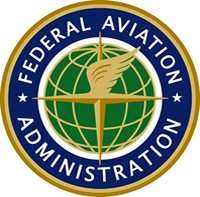Thu, Sep 17, 2009
Safety Alert Focuses On Short-Haul Operators
 The FAA has issues a 'Safety Alert
For Operators'(SAFO) in light of frequent reports of crew fatigue,
particularly among short-haul pilots and crew.
The FAA has issues a 'Safety Alert
For Operators'(SAFO) in light of frequent reports of crew fatigue,
particularly among short-haul pilots and crew.
The SAFO indicates short-haul pilots commonly identify sleep
deprivation and high workload as the main factors contributing to
their fatigue. Long-haul pilots, however, generally attribute sleep
deprivation and circadian rhythm disruption caused by multiple
time-zone crossings as the main causes of fatigue. Both short-haul
and long-haul flight crewmembers report fatigue resulting from
multiple flight legs, early wake times, consecutive duty days,
insufficient recovery sleep periods, time demands and high
workloads resulting from high density air traffic environments. The
SAFO concludes fatigue is a hazard that if not properly mitigated
or countermeasures enacted, can elevate the risk of these flight
operations, and says certificate holders must recognize the
potential for elevated risk and be proactive in minimizing exposure
to fatigue-related incidents or accidents.
The report says that, typically, short-haul (domestic) pilots
are engaged in “hub and spoke” operations with some
limited point-to-point flying. Short-haul crews are challenged by
schedules that involve short turn-around times between multiple
flights. Pilots conducting these types of operations report their
schedules typically consist of four to five segments, averaging
approximately six hours of flight time. Thirteen to fifteen hour
duty days typify this type of operation. The result is an increased
workload due to the multiple take-offs and landings and time
constraints of meeting schedule deadlines over the course of the
long day.
It goes on to say that scheduling factors have a major impact on
a crewmember’s ability to sleep and maintain a proper level
of alertness. Sleep loss is one of the primary contributors to
fatigue in flightcrew and is directly related to a variety of
scheduling factors. In short-haul operations, pilots normally fly a
round trip out of a hub and then may sit for several hours before
their next flight. This type of scheduling has the potential for a
latent condition that contributes to the cumulative effects of
fatigue.
 The document says that both
operators and individual pilots are responsible for assuring they
have ample sleep opportunities. as a critical countermeasure to
fatigue. Certificate holders should consider providing crew rest
facilities that have rooms away from the general traffic for quiet,
comfortable and uninterrupted sleep as well as expedited
transportation to and from the airport in the layover city.
Individual pilots must understand the importance of sleep
opportunities and ensure they are properly rested prior to the next
flight day.
The document says that both
operators and individual pilots are responsible for assuring they
have ample sleep opportunities. as a critical countermeasure to
fatigue. Certificate holders should consider providing crew rest
facilities that have rooms away from the general traffic for quiet,
comfortable and uninterrupted sleep as well as expedited
transportation to and from the airport in the layover city.
Individual pilots must understand the importance of sleep
opportunities and ensure they are properly rested prior to the next
flight day.
The FAA concludes that part 121 Directors of Operations and
Safety and part 135 Directors of Operations should review their
current policies and procedures addressing flight crewmember
fatigue countermeasures. This review should address at minimum:
- Current scheduling practices;
- Scheduled or assigned rest periods;
- Establish effective rest enhancing prerequisites for layover
city hotels; and
- Encourage the use of flightcrew rest facilities between flights
to counter the effects of cumulative fatigue.
- Educate their pilots and crew on the importance of proper rest
and encourage them to take advantage of rest facilities.
It further recommends that pilots in part 121 or 135 operations
should understand their responsibility with regard to ensuring that
they achieve the required rest so they are properly rested and fit
for each assigned or scheduled flight. The Federal Aviation
Administration (FAA) will continue to research the subject of
fatigue, evaluate the relevant data and inform the commercial
operations community of effective methods for reducing flightcrew
fatigue.
More News
Aero Linx: Model Aeronautical Association of Australia MAAA clubs are about fun flying, camaraderie and community. For over 75 years, the MAAA has been Australia’s largest fl>[...]
Touchdown Zone Lighting Two rows of transverse light bars located symmetrically about the runway centerline normally at 100 foot intervals. The basic system extends 3,000 feet alon>[...]
“Discovery and innovation are central to our mission at Virgin Galactic. We’re excited to build on our successful record of facilitating scientific experiments in subor>[...]
How To Get A Story On Aero-TV News/Feature Programming How do I submit a story idea or lead to Aero-TV? If you would like to submit a story idea or lead, please contact Jim Campbel>[...]
Student Pilot Reported That During Rotation, “All Of A Sudden The Back Of The Plane Kicked To The Right..." Analysis: The student pilot reported that during rotation, “>[...]
 ANN's Daily Aero-Linx (05.02.24)
ANN's Daily Aero-Linx (05.02.24) ANN's Daily Aero-Term (05.02.24): Touchdown Zone Lighting
ANN's Daily Aero-Term (05.02.24): Touchdown Zone Lighting Aero-News: Quote of the Day (05.02.24)
Aero-News: Quote of the Day (05.02.24) ANN FAQ: Contributing To Aero-TV
ANN FAQ: Contributing To Aero-TV NTSB Final Report: Cirrus Design Corp SR20
NTSB Final Report: Cirrus Design Corp SR20




